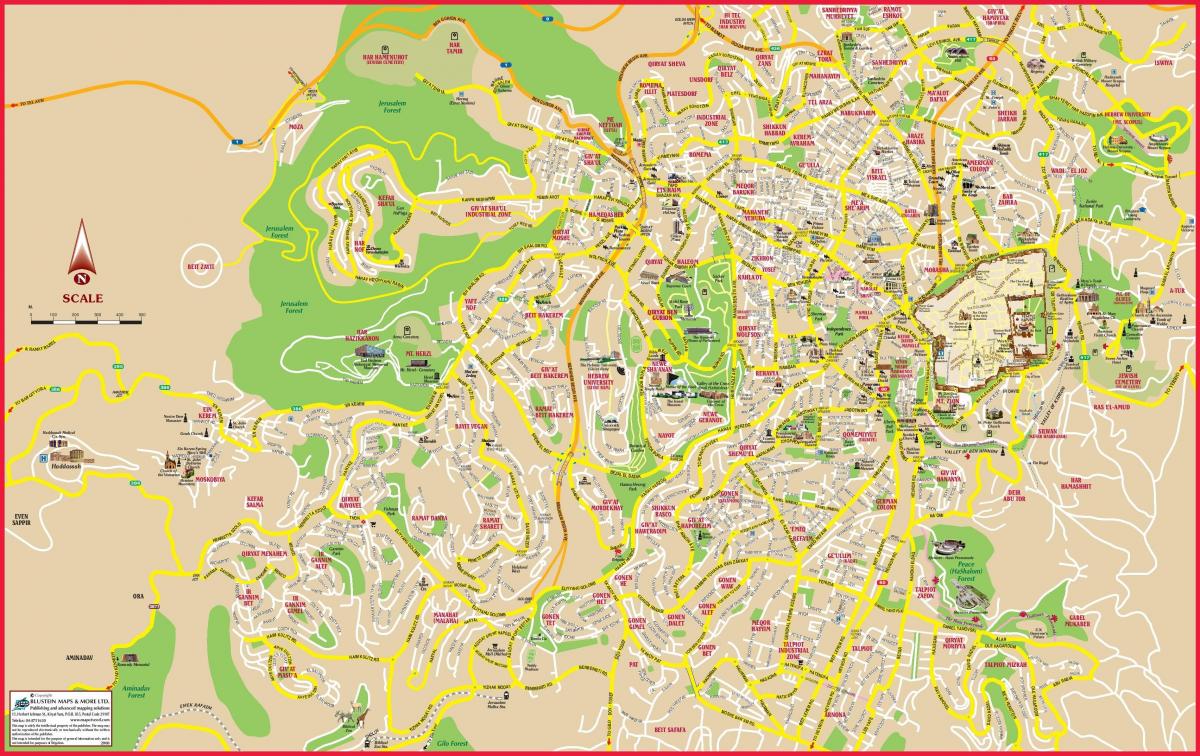search
Jerusalem map
The map of Jerusalem. Jerusalem map (Israel) to print. Jerusalem map (Israel) to download. Jerusalem stands on hills at an elevation of 2,575 feet (785 metres) as you can see in Jerusalem map. The modern unified city is the largest municipality in Israel or the West Bank and is the heart of an urban agglomeration that spills outside the city limits into adjacent areas of both jurisdictions. At the centre of the modern municipality is the Old City, a walled medieval enclosure of less than half a square mile (roughly one square km), from which the entire city has grown. To the east the city looks down on the Dead Sea and across the Jordan River to the arid mountains of eastern Jordan (the biblical mountains of Moab). To the west it faces the coastal plain and the Mediterranean Sea, about 35 miles (60 km) away.
Jerusalem plays a central role in the spiritual and emotional perspective of the three major monotheistic religions. For Jews throughout the world it is the focus of age-old yearnings, a living proof of ancient grandeur and independence and a centre of national renaissance; for Christians it is the scene of Jesus agony and triumph; for Muslims it is the goal of the Prophet Muhammad mystic night journey and the site of one of Islam most sacred shrines. For all three faiths it is a holy city, a centre of pilgrimage, and an object of devotion. Despite a rapidly changing demography, Jerusalem has retained a diverse and cosmopolitan character, particularly in the walled Old City with its Armenian, Christian, Jewish, and Muslim quarters as its shown in Jerusalem map: Arabs in traditional and modern attire; Christians, Western and Oriental, in their infinite variety of secular garb and monastic vestments; Jews in casual and Orthodox dress; and hosts of tourists combine in colourful, kaleidoscopic patterns.
Jerusalem is exceptionally rich in birdlife, which includes 70 resident species and about 150 winter visitors as its mentioned in Jerusalem map. Those most commonly seen are the hooded crow, jay, swift (which nests in old walls and buildings), and bulbul. Large flocks of white storks overfly the city. In the winter, starlings and white wagtails roost in the thousands at various points in the metropolitan area. However, goldfinches and linnets, formerly numerous, now rarely appear. Also often observed within the city are the lesser kestrel and the Palestinian sunbird. The only venomous snake is the Palestine viper, but this is rarely seen in urban areas. The smooth lizard and common chameleon frequent gardens and the walls of houses.
Jerusalem has a mixed subtropical semiarid climate with warm dry summers and cool rainy winters. The average annual precipitation is about 24 inches (600 mm), and snowfalls—which in some years do not occur—are generally light. Average daily mean temperatures range from about 75 °F (24 °C) in August to about 50 °F (10 °C) in January as you can see in Jerusalem map. The hot dry desert wind, called sharav in Hebrew (or khamsin, from the Arabic word for “fifty,” as it is said to come some 50 days per year), is fairly common in autumn and spring. Average daily humidity is about 62 percent in the daytime but may drop 30 to 40 percent under sharav conditions. Summer exposure to the sun rays in Jerusalem is intense because of the lack of clouds and the low humidity but also because the sun reaches such a high angle (80° above the horizon) at that season.


